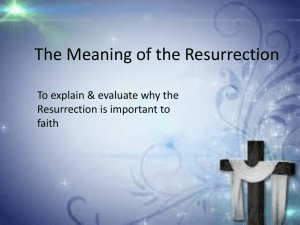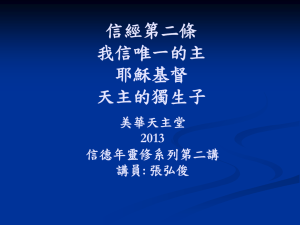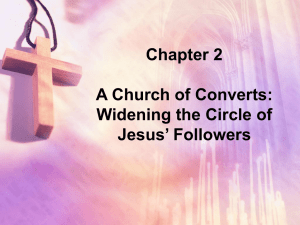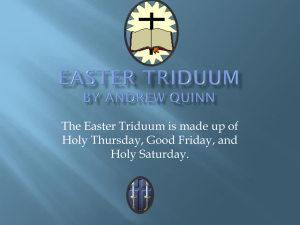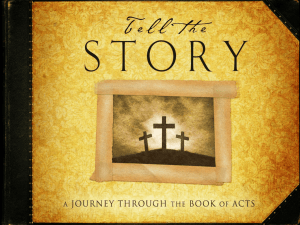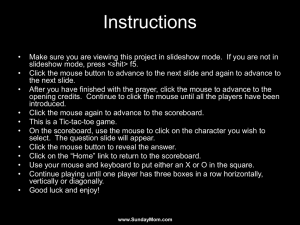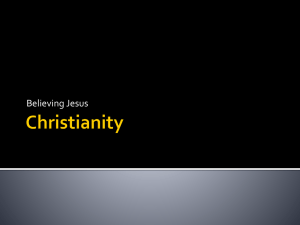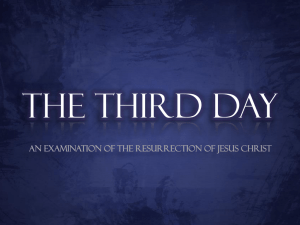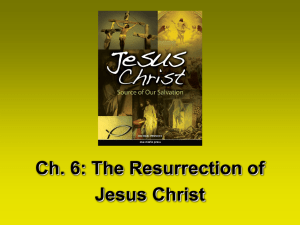Redemption+Through+the+Paschal+Mystery
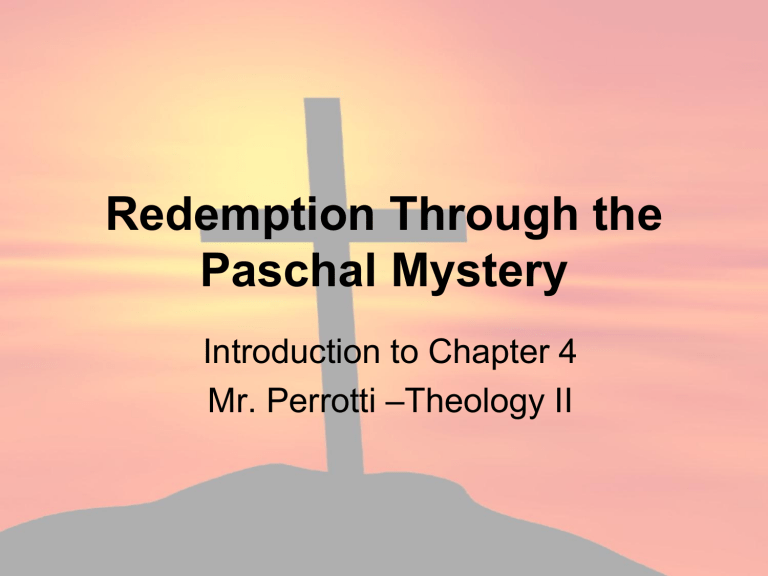
Redemption Through the
Paschal Mystery
Introduction to Chapter 4
Mr. Perrotti –Theology II
Paschal Mystery
• Paschal Mystery = Passion, death,
Resurrection, and Ascension of Jesus
The Passion and Death of Jesus
Jesus’ suffering and death is the mystery of redemptive love
The Kenosis: Philippians 2:5-11.
(Christ “emptying out” himself for us)
"What is the kenosis?"
• The term kenosis comes from the Greek word for the doctrine of Christ’s selfemptying in His incarnation. Christ completely submitted Himself to the will of the Father.
• However, when it comes to the kenosis , we often focus too much on what Jesus gave up.
• The kenosis also deals with what Christ took on. Jesus added to Himself a human nature and humbled Himself.
Jesus went from being the glory of glories in Heaven to being a human being who was put to death on the cross.
• As part of the kenosis, Jesus sometimes operated with the limitations of humanity ( John 4:6 ;
19:28 ). He surrendered the use of some of His divine attributes.
• Jesus was still perfectly holy, just, merciful, gracious, righteous, and loving - but to varying degrees Jesus was not omniscient or omnipotent
.
• The Greek word translated as
“Omnipotent meaning “All-ruling” or
Almighty!
• The term omnipresent means being present everywhere at the same time
• God is both Omnipotent and
Omnipresent
• Almighty and everywhere at the same time
• Human beings perceive through the senses, but there are limits to what the senses let us perceive and understand. But
God’s senses are not limited like ours! His
Spirit searches all things (1 Corinthians
2:10), and nothing is beyond God’s ability to perceive it.
• In this sense, He is omniscient. Nothing can escape His gaze and His knowledge. If it can be known, He knows it!
• But if we are to use the word omniscient to describe our
Father and His glorified Son, it cannot mean that God knows our every choice before we make it in every circumstance, because
Scripture tells us otherwise!
• During Abraham’s Great Test,
God waited until then last moment to intercede.
• God is all powerful, everywhere, and all knowing.
Final Days
• Holy Thursday
–Last Supper – Sacrament of Holy
Orders and Eucharist. Washing of
Feet.
–Agony in the Garden
–Arrest –Judas betrays Christ
–Trial before the Sanhedrin
Jesus as Man
Good Friday
– Trial before Herod and trial before Pilate
– Whipped and crowned with thorns
– Crucifixion (Roman method of execution)
– Death
– Burial
• Joseph of Arimathea provides tomb
• Stone rolled in front of tomb and soldiers at guard
Easter Vigil
Holy Saturday
– Waiting
– Christ “Open’s the Gates of Heaven”
– Fulfills his Covenant with Man
– Sits at right hand of the Father
The Resurrection of Jesus
• Easter Sunday
• Redemption accomplished and the promise fulfilled
• Jesus as Divine
Resurrection
(con’t)
1.
A historical event involving Christ’s physical body.
• Testified to by those who saw the Risen
Jesus.
• Verified by the empty tomb
.
• The three Mary’s first to find tomb empty
Resurrection
(con’t)
2. A transcendent event in which Jesus is no longer bound by space and time.
The Resurrection is not a resuscitation or a return to earthly life.
Resurrection
(con’t)
3. The significance of Christ’s Resurrection
– Confirmation of Jesus’ divinity and of his words and teachings
– Fulfillment of the promises in the Old
Testament and of Jesus’ earthly promises
– A promise of our own resurrection (1 Cor 15).
The Ascension
• The Ascension and glorification of Jesus
• Forty days after Easter
• the sending of the Holy Spirit at Pentecost
• Disciples and Apostles believed Jesus would be “Right Back”
• Jesus proclaims his second coming.
Ascension
(con’t)
• The Ascension marks the entrance of
Jesus’ humanity into heaven
• Jesus’ promise to be with us forever (Mt
28:20)
• The sending of the Holy Spirit is part of the promise.
Ascension
(con’t)
• 3. Where Jesus has gone, we hope to follow
– (“We look for the resurrection of the dead and the life of the world to come”)
– Mary, through her Assumption into heaven body and soul, is an anticipation of the resurrection of others who will follow
Pentecost –Coming of Holy
Spirit
• Jesus promised to send the Holy Spirit to give his Apostles and Disciples the true fire to proclaim Jesus as the Messiah.
• Pentecost – 50 Days after Easter – Day of celebration for Jews and Gentiles.
• Thousands of people converted on that first day.
• Apostles given the Gift of Tongues.
The Mass
• We participate in the mystery of redemption through the sacramental life of the Church, especially the Holy Eucharist.
• A reenactment of the Ministry, Passion,
Death and Resurrection of Christ.
• Christ’s example given to us at the last supper.

